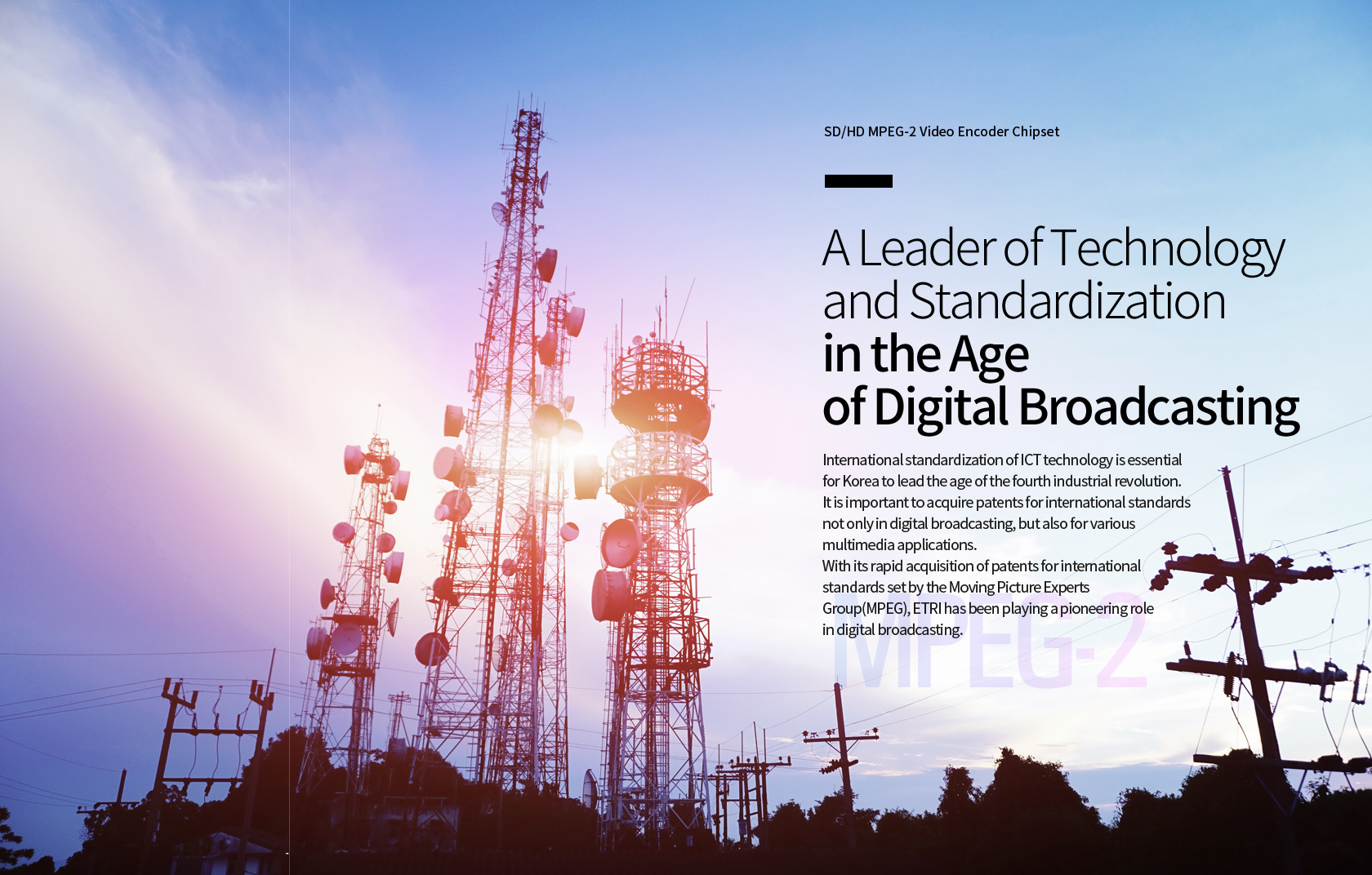
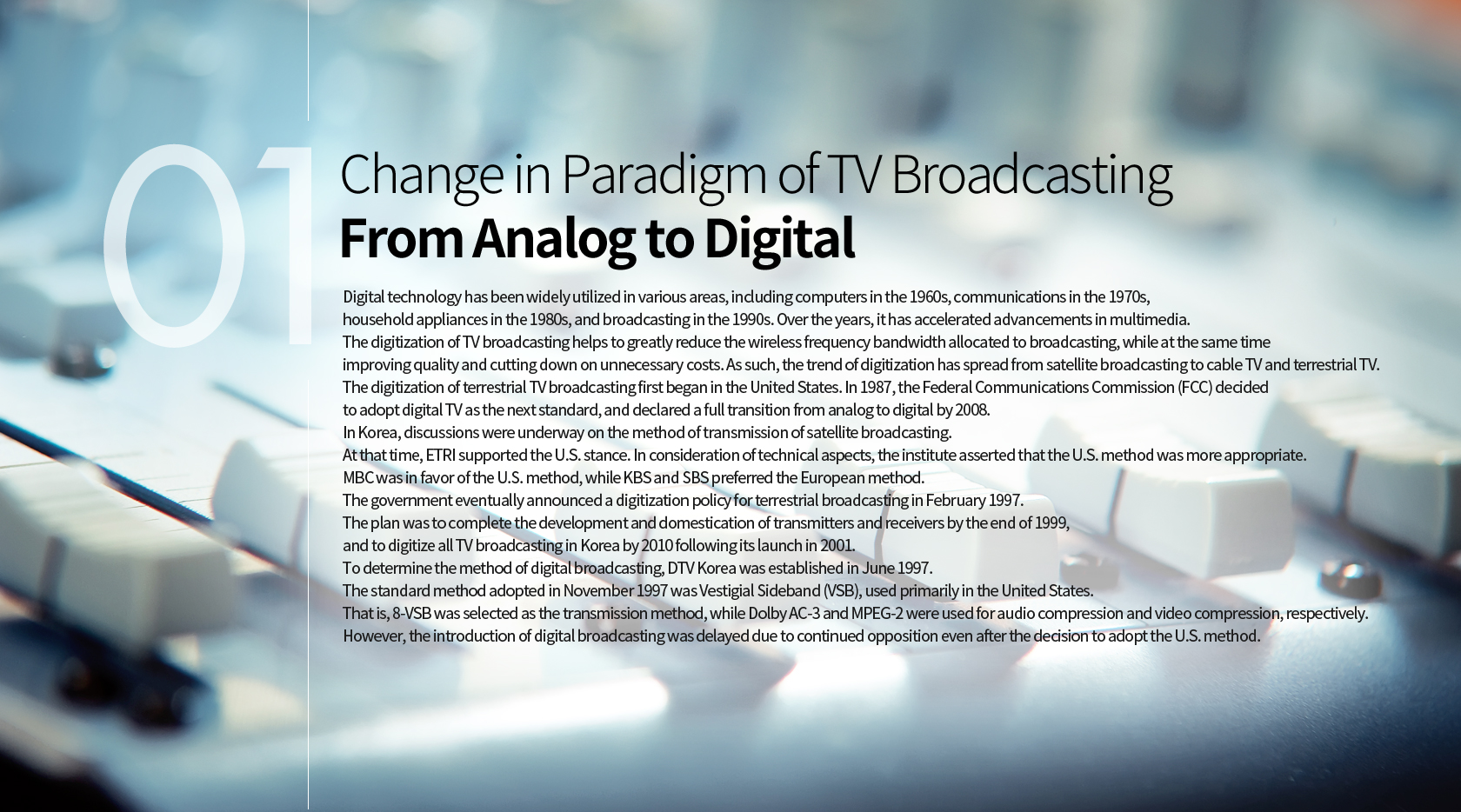

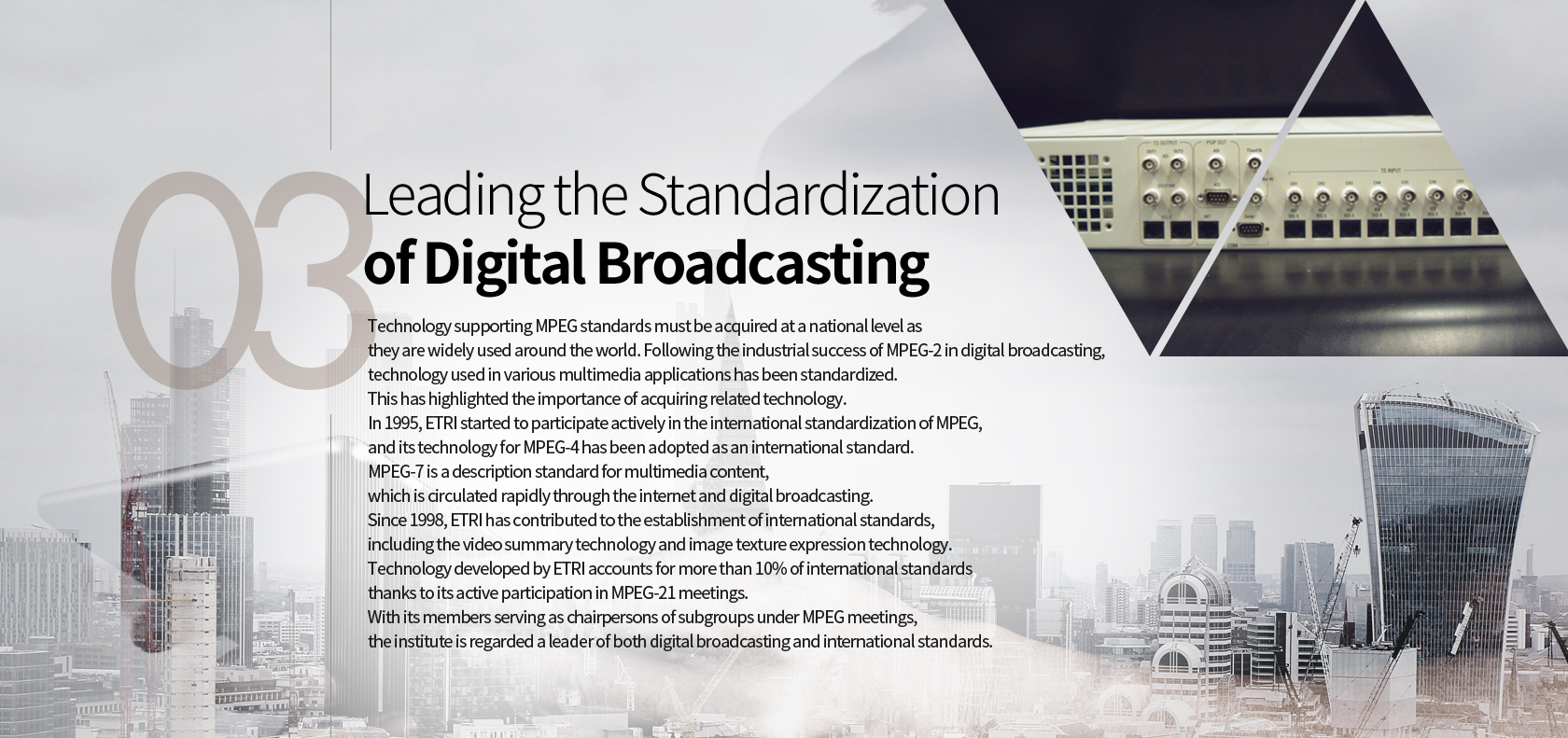

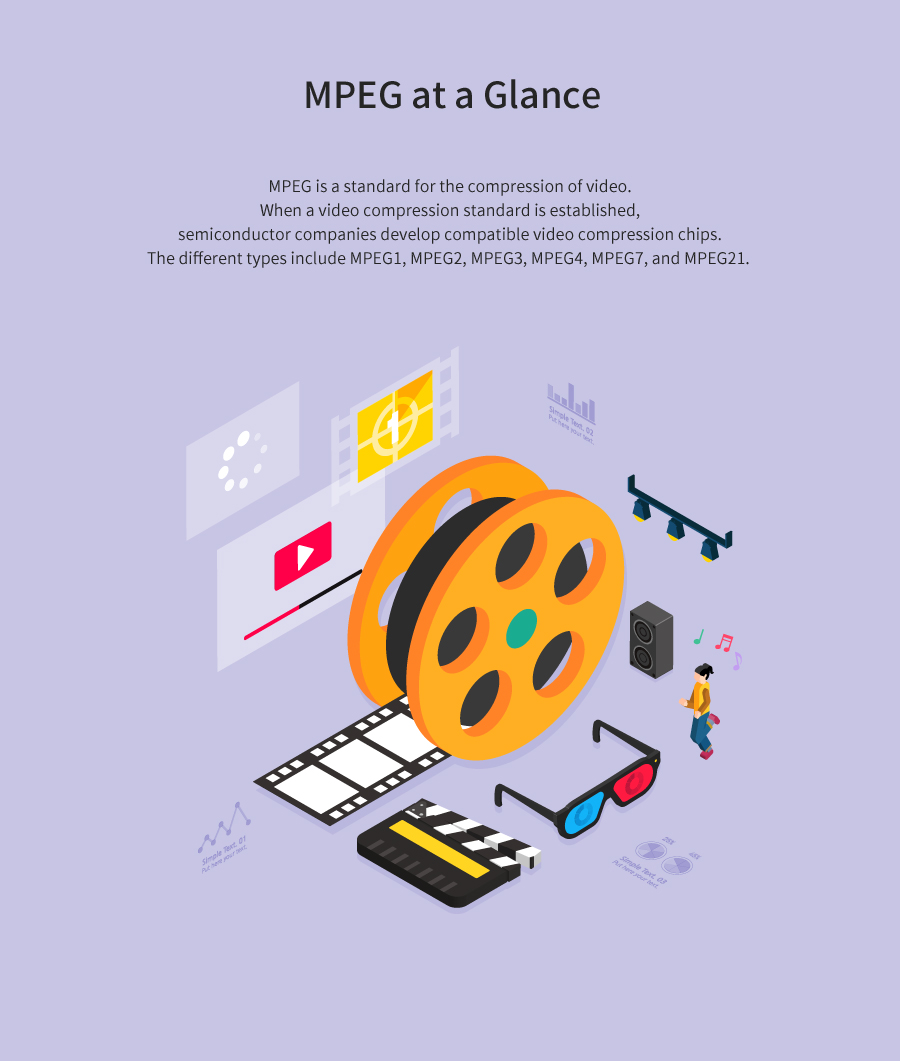
SD/HD MPEG-2 Video Encoder Chipset
A Leader of Technology
and Standardization
in the Age of
Digital Broadcasting
International standardization of ICT technology is essential for Korea to lead the age of the fourth industrial revolution. It is important to acquire patents for international standards not only in digital broadcasting, but also for various multimedia applications.
With its rapid acquisition of patents for international standards set by the Moving Picture Experts Group (MPEG), ETRI has been playing a pioneering role in digital broadcasting.
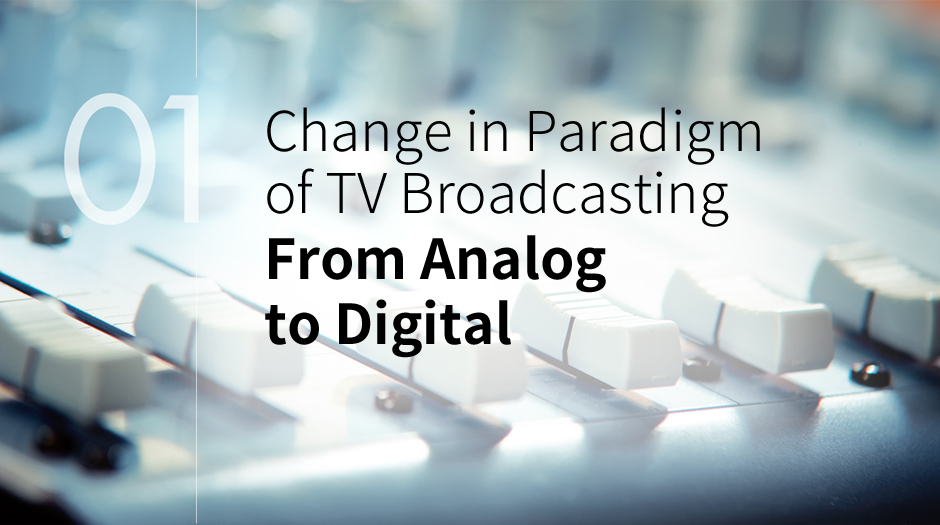
Digital technology has been widely utilized in various areas, including computers in the 1960s, communications in the 1970s, household appliances in the 1980s, and broadcasting in the 1990s. Over the years, it has accelerated advancements in multimedia. The digitization of TV broadcasting helps to greatly reduce the wireless frequency bandwidth allocated to broadcasting, while at the same time improving quality and cutting down on unnecessary costs. As such, the trend of digitization has spread from satellite broadcasting to cable TV and terrestrial TV.
The digitization of terrestrial TV broadcasting first began in the United States. In 1987, the Federal Communications Commission (FCC) decided to adopt digital TV as the next standard, and declared a full transition from analog to digital by 2008. In Korea, discussions were underway on the method of transmission of satellite broadcasting. At that time, ETRI supported the U.S. stance. In consideration of technical aspects, the institute asserted that the U.S. method was more appropriate. MBC was in favor of the U.S. method, while KBS and SBS preferred the European method. The government eventually announced a digitization policy for terrestrial broadcasting in February 1997. The plan was to complete the development and domestication of transmitters and receivers by the end of 1999, and to digitize all TV broadcasting in Korea by 2010 following its launch in 2001. To determine the method of digital broadcasting, DTV Korea was established in June 1997. The standard method adopted in November 1997 was Vestigial Sideband (VSB), used primarily in the United States. That is, 8-VSB was selected as the transmission method, while Dolby AC-3 and MPEG-2 were used for audio compression and video compression, respectively. However, the introduction of digital broadcasting was delayed due to continued opposition even after the decision to adopt the U.S. method.

Even amidst such chaos, ETRI remained committed to the development of key equipment for digital satellite broadcasting. Its goal was to optimize the performance of the terrestrial digital TV transmission system in preparation of the 2001 launch of digital broadcasting services. This included video compression technology using MPEG-2. ETRI started research on MPEG in the early 1990s, when discussions over the format of terrestrial TV broadcasting had just emerged. At that time, only a few developed countries such as the United States and Japan were conducting research on MPEG-related technology. Such studies were not conducted in Korea because the country lacked the technological capacity, and MPEG was not expected to have any industrial impact. Even large enterprises were only involved in the final assembly of imported products, and the general perception was that analog broadcasting was satisfactory. Some researchers in ETRI did not support MPEG research, but those with insights into the future direction of broadcasting technology identified a need to develop technology for digital broadcasting standards. Because of conflicting opinions, the institute continued to face several challenges, including being cut off from research funds in the middle of a project.
In July 1996, Korea became the first country in the world to launch digital satellite broadcasting using the MPEG-2 standard with a satellite broadcasting transmission system developed by ETRI.
Based on the digital TV transmission system, ETRI implemented all subsystems for the high-resolution TV satellite broadcasting system, including a high-resolution TV media encoder using the MPEG-2 standard. In August 1998, ETRI demonstrated a simultaneous broadcasting service with reverse direction support for SDTV and HDTV simultaneous transmission. In addition, it domesticated the technology for key modules, such as the pre-processing unit, motion estimation and compensation unit, encoding/decoding unit, and variable encoding/decoding unit, and satellite channel decoders while adhering to GA standards. Technology transfer has been completed for the high-resolution TV transmitter, encoding technology, and receiving technology. In particular, the high-resolution TV transmission technology was used to broadcast the 2002 FIFA World Cup.
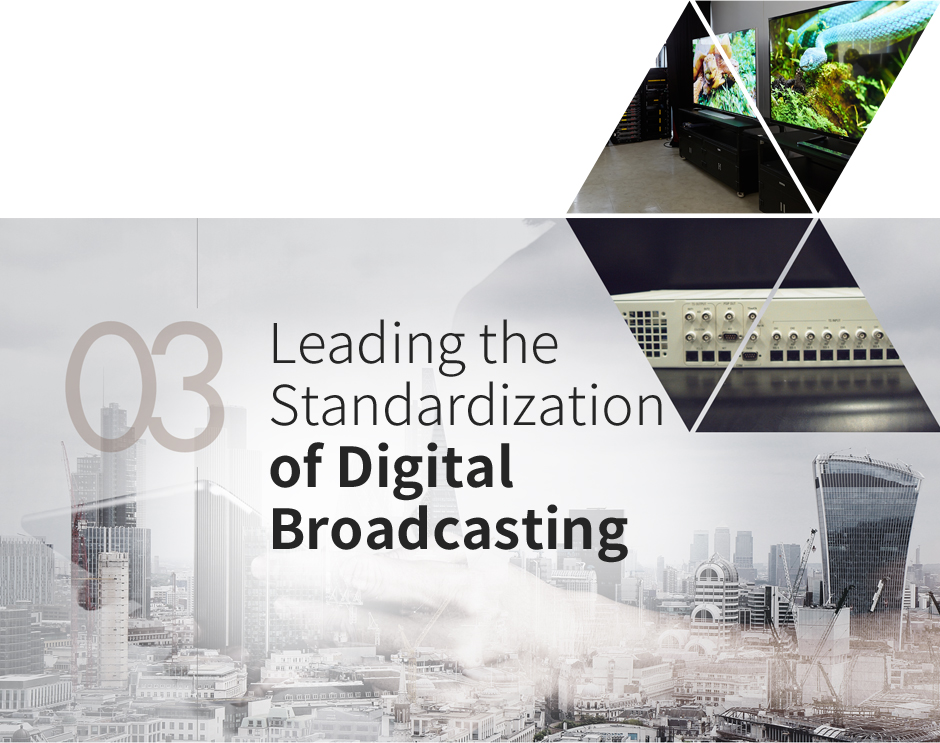
Technology supporting MPEG standards must be acquired at a national level as they are widely used around the world. Following the industrial success of MPEG-2 in digital broadcasting, technology used in various multimedia applications has been standardized. This has highlighted the importance of acquiring related technology.
In 1995, ETRI started to participate actively in the international standardization of MPEG, and its technology for MPEG-4 has been adopted as an international standard. MPEG-7 is a description standard for multimedia content, which is circulated rapidly through the internet and digital broadcasting. Since 1998, ETRI has contributed to the establishment of international standards, including the video summary technology and image texture expression technology.
Technology developed by ETRI accounts for more than 10% of international standards thanks to its active participation in MPEG-21 meetings. With its members serving as chairpersons of subgroups under MPEG meetings, the institute is regarded a leader of both digital broadcasting and international standards.








